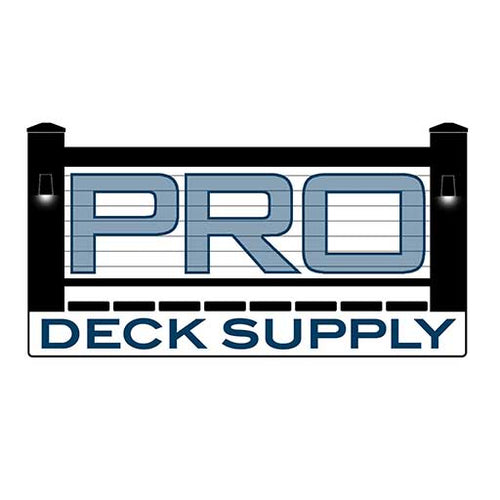Many older decks may have a railing that needs work, or maybe you want to expand your deck area.
Will you be able to get matching railing? Will the new rail be a different color than the old weathered rail? Should you just replace it all? Maybe, but we'll go through why or why not, so you can make the decision for yourself.
Should I replace some or all of my railing?
Do you think it would break if you fell through it or against it? Then it might be time to replace it...
If you have any portion of your panels or posts that are rotting and unstable, the chances are high that the same parts of the rail on the rest of the deck may be compromised as well.
Material cost for a decent entry-level railing system would start around $50 per linear foot (depending on your configuration), and if you're going to rehab the rail yourself there would be very few additional costs other than tax and delivery.
If you have wood railing that's less than 10 years old or in good condition, you may be able to add on to it without seeing any difference in appearance or performance.
If you have metal railing that's strong and not rusting, and you can find a reasonable matching system, there isn't much reason to replace the old sections when adding on.
Anytime you mix old and new materials, you run the risk of it not matching, or different parts of the rail weathering at different rates (mostly relevant with wood rail, not so much with metal or composite).
Wood Railing and Uncapped Composite Railing
Most modern rail frames are made of aluminum or capped composite material, and won't be identical to any existing wood or uncapped composite rails. If you have a wood rail and want to replace or match it, it's only a matter of finding dimensional cedar or treated wood in the same sizes, then configuring it the same way.
If you'd like to use some of your existing rail parts like posts, you may be able to. If, and only if your wood posts are strong and not rotted, you could put a composite or metal sleeve over it and install matching metal or composite panels with it. Ultimately, this will not save much money or labor, and it may be worth it to spend the additional $10-$40 to remove the wood post and mount a surface-mounted post in the same place. Post sleeves, caps, and skirts installed over a wood post cost nearly as much as a surface-mounted metal post.
Starting fresh without any existing wood/composite railing to fit or match leaves you with every option of railing available to you, instead of the handful of systems that have sleeve options. It also means that your new railing won't be depending on your existing (old) posts that will certainly not last as long as your new low-maintenance rails.
Metal Railing
If you have a metal railing system, the chances are high that you can find the same system or a similar version of the rail to add on, and both will continue to have a long lifespan.
If it's a railing system from a custom fabricator, it may be difficult to get more of the same system unless you go back to the same fabricator.
Many metal baluster railings look similar, having a small bottom rail, 3/4" square balusters, and 3" or similar posts. They may be just similar enough to your existing railing to not notice it. Or the powder coating, rail profile differences, or post caps are just different enough for it to annoy you.
If you can compare photos or samples of the new against old rail, you'll get a better grasp on if it's a good fit for your deck and style.

